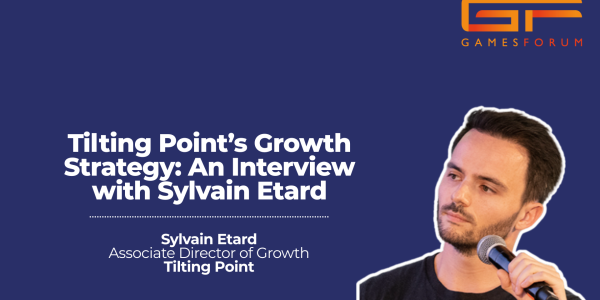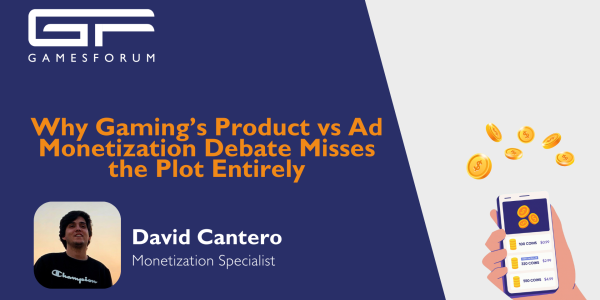Don’t Make These Mistakes When Measuring Ad Monetization

By Noelia Lopez, Ad Monetisation Manager, Tilting Point
Running effective, efficient ads waterfalls can often mean the difference between success and failure for mobile and free-to-play game developers. The good news is that there have never been more ways for companies to measure the performance of ads. But all metrics and methodologies for calculating ad performance are not created equal.
Some teams swear by CPM, others rely on ARPDAU, while some focus on total revenue. Well, spoiler alert … they’re all wrong.
With so much riding on the success of a company’s ad campaigns, the team at Tilting Point wanted to share a few of the most common mistakes we see in measuring ad performance. By avoiding these pitfalls, teams of all shapes and sizes can get on the path to understanding the efficacy of its monetization efforts, optimizing its programs, and growing its games.
Mistake #1: Focusing too much on CPMs
One of the most common mistakes we see with developers is an overreliance on CPMs, or cost per thousand impressions. It’s easy to see why CPMs are such a ubiquitous metric for most studios. CPMs are easy to monitor, and the logic is simple — if the cost is going up, you’re doing great, if the cost is going down, you need to check your waterfall setup and reconfigure.
But it’s not that simple. CPM on its own can be misleading for two main reasons. First, it’s incredibly easy to manipulate, and second, it can be influenced by a massive number of external factors.
Here’s just a partial list of things that can impact CPMs:
- Adding fix/target floors
- A UA campaign that brings in users that change a company’s traffic split
- The game is featured by a first party app store
- A new game is released, and they are doing heavy UA (and your traffic is whitelisted)
- Seasonal changes: Easter, Christmas, Halloween, Back to School…
A lot of these factors are external to the waterfall optimization (or header bidding). This means that it can be hard to pinpoint what factors are actually impacting a company’s CPM. If the root cause isn’t clear, it can be hard to make smart decisions about how to optimize a campaign. Without looking at it in concert with other metrics, CPM on its own may actually be a counterproductive to a company’s decision making process.
Mistake #2: Making silioed decisions
This brings us to our next point: too many companies are making decisions in a vacuum. While a studio is rarely in the position to have every piece of data it wants to make great decisions, it’s important to understand how different KPIs relate to and impact each other. Any single metric on it’s own can paint a flawed, incomplete, and potentially misleading picture.
Therefore it’s important for studios to think holistically about any changes in performance to make it easier for them to understand the cause of the change, and their best course of action. Imagine for example that a team’s ads ARPDAU is going up, there are a number of things for them to consider:
- Is it Ads/DAU going up? Because this could mean that users are seeing more ads. A new placement, a change in the caps, a change in the game, etc…
- If it’s stable, it could be the CPM. Is it going up? If yes, teams may want to check if the traffic split changed. Maybe the game is hosting more users in the US, or you should talk with your account managers. Maybe there was a new campaign in. Or maybe the studio did a good job with the waterfall.
- What about DAU? It could be the case that ARPDAU goes up because the game is losing DAUs. Engaged users stay while non-that-engaged users leave.
As you see, all the metrics are connected to each other, and each one provides a piece of an interconnected puzzle that can help teams make better-informed decisions.
Mistake #3: Looking for shortcuts
Another common mistake that we see is that developers assume there’s a one-size-fits all solution for cracking the code with UA and ad optimization.
It happens all the time, a successful studio gives a compelling presentation at a conference about the tools and tactics they used to climb to the top of the charts. Young studios rush back to their offices, employ the same tactics, and …. don’t see the same results.
While it’s a good idea to learn from the best, teams need to dive deep to figure out how to channel that inspiration into their unique games and situation. That means three things:
- Ask the right questions. Studios need to understand what is working, what isn’t working, and why. Is the game in the same genre? Does it have similar users? Is the integration done properly?
- Test, test, test. Then test. There is no one “right answer” when it comes to optimizing ads, so teams need to be constantly testing their assumptions and trying new things. The world of ad monetization moves incredibly fast, and teams that accept the status quo are often left behind.
- Connect the dots. When companies talk about best practices, they often focus on the wins, but leave out the struggles. When looking for inspiration, studios should look to understand the path that other companies took to find success, not just the final outcome. For example, it’s less important to understand which mediation platform a company used than it is to understand why they chose it, what platform it replaced, and how they optimized it along the way.
Remember that one piece of information on its own only tells a small part of the story. Teams that are looking to benefit from the best practices of other studios should constantly seek a more holistic understanding of the challenges and solutions.
Conclusion
Teams that are looking to measure their ad performance should think deeply about how the metrics they care about most work together holistically. The more granular a studio can get about the metrics and KPIs that matter to their business, the easier it will be to understand the performance of its ads, test for ways to improve, and create the right dashboards to monitor their games.
If you’re looking for a partner to help optimize your ad monetization or UA programs, Tilting Point is here to help. Send us an email at [email protected]
This article was originally posted on the Tilting Point blog on Medium











